Gemini Alarm/ immobiliser issue
Discussion
Clearly your battery is 50% discharged but as your meter readings match it would indicate there's no voltage drop issues at the +12v points you tested. However it would seem earthing is a different story, the reading at the gear stick is not what you'd expect, this because the gearbox is bolted to the engine via the bell housing so what you're testing at the gear stick is more or less how effective your engine earth is.
If you put your meter to the battery positive then earth it at the gearbox and you find somehow you've mysteriously lost 4v or more as described, then there's definitely an issue with your engine earthing! Good engine earthing is critical for many reasons, however it shouldn't affect your ECU operation because the installers earth the Canems ECU directly to the battery.
TVR earthed the engine back to the battery using two thin cables and the chassis in between them, given the objective is to achieve a reliable, low resistance, and direct connection between the two points (engine to battery negative terminal) it's a rather convoluted arrangement and the source of all source of all sorts of electrical issues just waiting to happen.....
First the engine block is connected to a stud welded to front O/S outrigger diagonal tube using a short but thin cable, the engine earth then passes through the chassis, finally the chassis is connected to the negative battery terminal via another fairly short but equally thin cable bolted to a body mounting bolt on the passenger side of the transmission tunnel.
The above arrangement of using the chassis as part of the earth circuit is not very reliable, as we can see there are many connections which are all points of potential corrosion that will cause the kind of high resistance you're describing. On a monocoque car the whole body is used as the earth path which works very well but it's always less effective when you try to do the same on a car with a separate chassis design such as a TVR, Lotus used the same arrangement so their cars tended to suffer the exact same earthing issues that are common on our TVRs.
Replacing the idea of using the chassis as your earth connection with a cable is far better as like this you now only have two points of connection (engine & battery), and you're directly connecting them together using a solid uninterrupted run of pure copper cable. To achieve this I ran a heavy gauge cable from a nice stout inlet manifold bolt, through the bulkhead grommet, directly back to my battery negative terminal.
To complete this upgrade I also upgraded the original TVR string thin and very long starter/charge cable that goes from the alternator via the 100a fuse and starter motor back to the battery positive terminal, and again using better quality marine tinned far heavier gauge cable, you can read about my starter/charge cable upgrade here:
https://www.pistonheads.com/gassing/topic.asp?h=0&...
If done together the above earth and starter/charge cable upgrades provide a comprehensive improvement of the car's main high amp circuit that is critical for the correct operation of the charging system, the engine starter system, and anything earthed to the engine block such as critical engine sensors.
Unfortunately the rest of TVR's wiring wasn't very good either, for instance I found a voltage drop between the battery and fuse board, check the twin brown cables that provide the +12v feed the fuse board, in the middle of this cable connection you will find a fuse holder housing an 80a strip fuse, in my case one of the connections on this fuse were lose causing high resistance and this melting of the fuse holder.
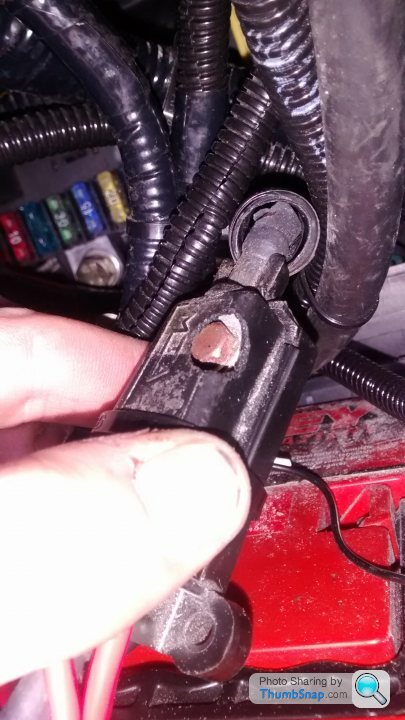
The post in the link below proves this failure is not uncommon, sadly my melted strip fuse holder was completely missed by the installers of my Canems system.
https://www.pistonheads.com/gassing/topic.asp?h=0&...
Given this is the primary/only +12v supply from the battery to the fuse board, and given the fuse board is the source of the car's entire electrical central nervous system, if the supply is compromised as mine was absolutely everything electrical on the car that runs through the fuse board will be affected to some degree.
Other areas to check that were also missed by the installers of my Canems system were my poor battery terminal to cable connections, here we can see the frayed main earth connection...
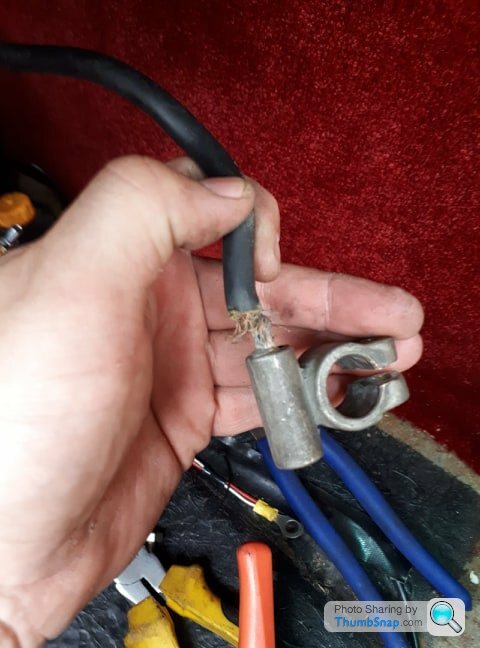
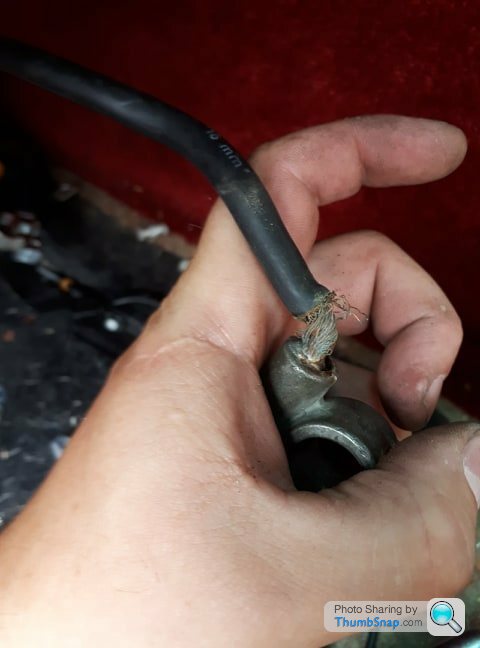
And now the poor cable to positive battery terminal connection with a screw missing they also missed.
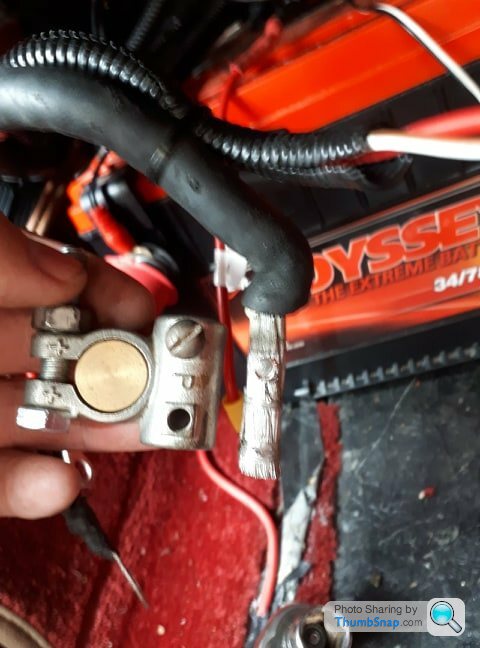
Before installing a new engine management system its critical the car's electrical system is fully appraised, anything like a poor connection to the fuse board, a frayed cable connection at the negative battery terminal, and a poor connection at the positive battery terminal, that were all present on my car, must be addressed before starting a so called ECU upgrade. Sadly the installers of my Canems system missed it all on my car, they also went on to intruce other points of failure in the form of their favorite cheap Chinese waterproof fuse holders that have proved themselves to be of very poor quality leaving me stranded at the side of the road more than once
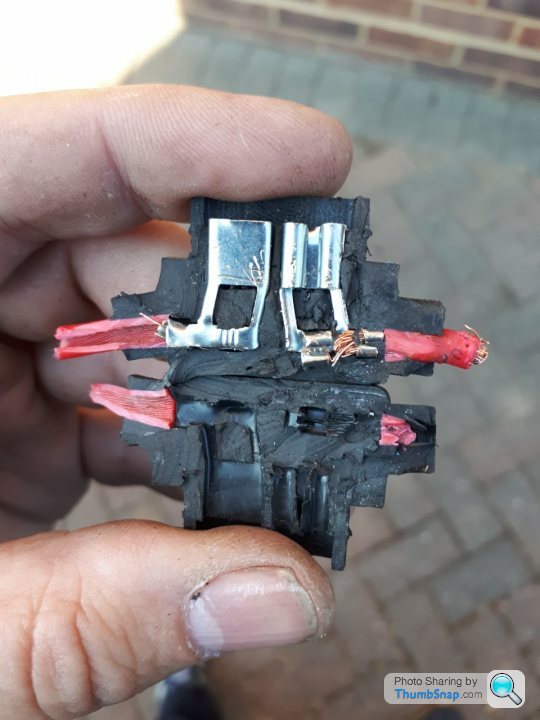
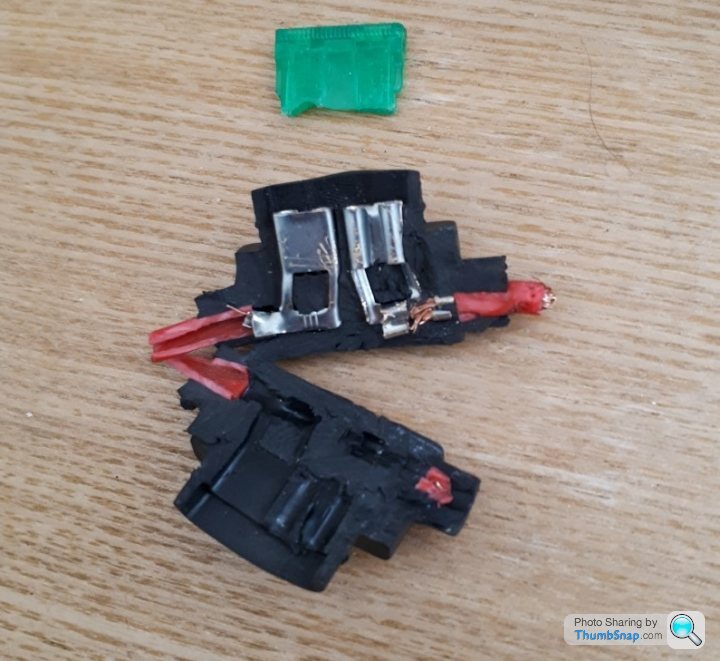
I also discovered the installers had earthed the illumination element of my LPG switch to the same earth pin on the ECU that activates the change between fuels, this caused an earth loop that meant the priming puls would run continuously flooding the inlet manifold with gas which was very unsafe, a fault they themselves introduced but couldn't trace. This earth loop was yet another issue I was forced to diagnose and correct myself, with all these electrical issues resolved and now my fourth replacement ECU the car has finally proved itself to be completely reliable with vastly improved and far more consistent operation.
I strongly suspect the last replacement Canems ECU I was sent was the first I received that actually has a proper machine built robot soldered printed circuit board ,with the previous ECUs being the hand soldered units others have had issues with. If you find you have one of these hand soldered ECUs the installers will replace it free of charger with the newer robot soldered ECU but they will insist you send your old ECU back so they can remove it from circulation, it seems pretty clear they are doing this in an attempt to bury the issue.
Finally I suffered issues with the cheap pattern part Bosch idle valve and equally poor quality pattern part MaP sensor selected by the installers to keep the cost of their engine management package down, all in all as engine management installations go the best word I can use is disappointing. I've been seriously inconvenienced my multiple breakdowns which is ironic as I chose the Canems system to improve the reliability of my car over the original Lucas 14CUX and distributor which to be fair to it was actually 100% reliable, the car was returned to the installers many times which became frustrating and cost me lots of time and with no real improvement.
Having given them many many chances I finally had to accept the installers were never going to get it right so that's when I decided to sort it all out myself, and it didn't take me long to find all the issues which actually weren't that expensive or time consuming to resolve, once I'd fixed all the bad connections and replaced their cheap fuse holders, sensors and idle valve the car was transformed and has proved itself to be 100% reliable ever since.
But if I'm honest I have to say the whole experience did leave a very bitter taste in my mouth especially when the installers started to try and blame me for all the issues I suffered and subsequently proved were the result of with their wiring work, penny pinching component selection and general lack of attention to detail
If you put your meter to the battery positive then earth it at the gearbox and you find somehow you've mysteriously lost 4v or more as described, then there's definitely an issue with your engine earthing! Good engine earthing is critical for many reasons, however it shouldn't affect your ECU operation because the installers earth the Canems ECU directly to the battery.
TVR earthed the engine back to the battery using two thin cables and the chassis in between them, given the objective is to achieve a reliable, low resistance, and direct connection between the two points (engine to battery negative terminal) it's a rather convoluted arrangement and the source of all source of all sorts of electrical issues just waiting to happen.....
- Engine to first cable
- First cable to chassis
- Chassis to second cable
- Second cable to battery
First the engine block is connected to a stud welded to front O/S outrigger diagonal tube using a short but thin cable, the engine earth then passes through the chassis, finally the chassis is connected to the negative battery terminal via another fairly short but equally thin cable bolted to a body mounting bolt on the passenger side of the transmission tunnel.
The above arrangement of using the chassis as part of the earth circuit is not very reliable, as we can see there are many connections which are all points of potential corrosion that will cause the kind of high resistance you're describing. On a monocoque car the whole body is used as the earth path which works very well but it's always less effective when you try to do the same on a car with a separate chassis design such as a TVR, Lotus used the same arrangement so their cars tended to suffer the exact same earthing issues that are common on our TVRs.
Replacing the idea of using the chassis as your earth connection with a cable is far better as like this you now only have two points of connection (engine & battery), and you're directly connecting them together using a solid uninterrupted run of pure copper cable. To achieve this I ran a heavy gauge cable from a nice stout inlet manifold bolt, through the bulkhead grommet, directly back to my battery negative terminal.
To complete this upgrade I also upgraded the original TVR string thin and very long starter/charge cable that goes from the alternator via the 100a fuse and starter motor back to the battery positive terminal, and again using better quality marine tinned far heavier gauge cable, you can read about my starter/charge cable upgrade here:
https://www.pistonheads.com/gassing/topic.asp?h=0&...
If done together the above earth and starter/charge cable upgrades provide a comprehensive improvement of the car's main high amp circuit that is critical for the correct operation of the charging system, the engine starter system, and anything earthed to the engine block such as critical engine sensors.
Unfortunately the rest of TVR's wiring wasn't very good either, for instance I found a voltage drop between the battery and fuse board, check the twin brown cables that provide the +12v feed the fuse board, in the middle of this cable connection you will find a fuse holder housing an 80a strip fuse, in my case one of the connections on this fuse were lose causing high resistance and this melting of the fuse holder.

The post in the link below proves this failure is not uncommon, sadly my melted strip fuse holder was completely missed by the installers of my Canems system.
https://www.pistonheads.com/gassing/topic.asp?h=0&...
Given this is the primary/only +12v supply from the battery to the fuse board, and given the fuse board is the source of the car's entire electrical central nervous system, if the supply is compromised as mine was absolutely everything electrical on the car that runs through the fuse board will be affected to some degree.
Other areas to check that were also missed by the installers of my Canems system were my poor battery terminal to cable connections, here we can see the frayed main earth connection...


And now the poor cable to positive battery terminal connection with a screw missing they also missed.

Before installing a new engine management system its critical the car's electrical system is fully appraised, anything like a poor connection to the fuse board, a frayed cable connection at the negative battery terminal, and a poor connection at the positive battery terminal, that were all present on my car, must be addressed before starting a so called ECU upgrade. Sadly the installers of my Canems system missed it all on my car, they also went on to intruce other points of failure in the form of their favorite cheap Chinese waterproof fuse holders that have proved themselves to be of very poor quality leaving me stranded at the side of the road more than once



I also discovered the installers had earthed the illumination element of my LPG switch to the same earth pin on the ECU that activates the change between fuels, this caused an earth loop that meant the priming puls would run continuously flooding the inlet manifold with gas which was very unsafe, a fault they themselves introduced but couldn't trace. This earth loop was yet another issue I was forced to diagnose and correct myself, with all these electrical issues resolved and now my fourth replacement ECU the car has finally proved itself to be completely reliable with vastly improved and far more consistent operation.
I strongly suspect the last replacement Canems ECU I was sent was the first I received that actually has a proper machine built robot soldered printed circuit board ,with the previous ECUs being the hand soldered units others have had issues with. If you find you have one of these hand soldered ECUs the installers will replace it free of charger with the newer robot soldered ECU but they will insist you send your old ECU back so they can remove it from circulation, it seems pretty clear they are doing this in an attempt to bury the issue.
Finally I suffered issues with the cheap pattern part Bosch idle valve and equally poor quality pattern part MaP sensor selected by the installers to keep the cost of their engine management package down, all in all as engine management installations go the best word I can use is disappointing. I've been seriously inconvenienced my multiple breakdowns which is ironic as I chose the Canems system to improve the reliability of my car over the original Lucas 14CUX and distributor which to be fair to it was actually 100% reliable, the car was returned to the installers many times which became frustrating and cost me lots of time and with no real improvement.
Having given them many many chances I finally had to accept the installers were never going to get it right so that's when I decided to sort it all out myself, and it didn't take me long to find all the issues which actually weren't that expensive or time consuming to resolve, once I'd fixed all the bad connections and replaced their cheap fuse holders, sensors and idle valve the car was transformed and has proved itself to be 100% reliable ever since.
But if I'm honest I have to say the whole experience did leave a very bitter taste in my mouth especially when the installers started to try and blame me for all the issues I suffered and subsequently proved were the result of with their wiring work, penny pinching component selection and general lack of attention to detail

Edited by ChimpOnGas on Sunday 26th January 09:07
Sorry for the rant Chris, but it does clearly demonstrate you need to check your ECU installation carefully as its proven the installers are not always getting it right, I'm aware of others who've suffered similar issues with this system so I'm certainly not an isolated case either.
Anyway, enough of all that, lets try to fix your issue by going right back to the beginning....
Ultimately you've got to follow the entire circuit from battery to ECU checking every point in between until you find a point where the delay presents itself on your meter, be systematic and you can't fail but find the section of the circuit where the issue resides. However, before you do this I would give the ECU a solid, reliable, and completely trusted +12v supply off the battery and see if the delay issue is eliminated or remains, if it remains you clearly have an issue with the ECU and it'll need returning for repair or replacement.
As previously covered beware the hand soldered Canems ECU, forget what the installers claim they're definitely proven to be unreliable, you absolutely want one with the far superior robot soldered board and the only way to tell what you currently have is to open the ECU up and have a look inside it's plastic enclosure.
Keep going, you're actually very close to locating your delay issue
Anyway, enough of all that, lets try to fix your issue by going right back to the beginning....
Little_Blue_Car said:
About 30 seconds after ignition on, the ECU light comes on, fuel pump primes and off we go. if, once the first ignition on eventually powers the ECU, I turn the car off and on again there is still a delay powering the ECU, but its shorter in duration 5-10 seconds, maybe less.
So my question would be... "do you get the same delay at at fuse 12 or not?"Ultimately you've got to follow the entire circuit from battery to ECU checking every point in between until you find a point where the delay presents itself on your meter, be systematic and you can't fail but find the section of the circuit where the issue resides. However, before you do this I would give the ECU a solid, reliable, and completely trusted +12v supply off the battery and see if the delay issue is eliminated or remains, if it remains you clearly have an issue with the ECU and it'll need returning for repair or replacement.
As previously covered beware the hand soldered Canems ECU, forget what the installers claim they're definitely proven to be unreliable, you absolutely want one with the far superior robot soldered board and the only way to tell what you currently have is to open the ECU up and have a look inside it's plastic enclosure.
Keep going, you're actually very close to locating your delay issue

Right, ECU out the car.
Made up a lead to connect 3a and 3b directly to spare battery.
The problem is the ECU.
Sat there watching the LED for 3 mins then on it came, exactly as it does in the car.
I'll take it up with the supplier from here. As you say Dave, it may be a faulty unit.
Shame as it has been perfect for 9 months. For once, maybe it isnt TVR wiring that's at fault!!
Made up a lead to connect 3a and 3b directly to spare battery.
The problem is the ECU.
Sat there watching the LED for 3 mins then on it came, exactly as it does in the car.
I'll take it up with the supplier from here. As you say Dave, it may be a faulty unit.
Shame as it has been perfect for 9 months. For once, maybe it isnt TVR wiring that's at fault!!
Little_Blue_Car said:
Right, ECU out the car.
Made up a lead to connect 3a and 3b directly to spare battery.
The problem is the ECU.
Sat there watching the LED for 3 mins then on it came, exactly as it does in the car.
I'll take it up with the supplier from here. As you say Dave, it may be a faulty unit.
Shame as it has been perfect for 9 months. For once, maybe it isn't TVR wiring that's at fault!!
Oh dear, sorry to hear that Chris.Made up a lead to connect 3a and 3b directly to spare battery.
The problem is the ECU.
Sat there watching the LED for 3 mins then on it came, exactly as it does in the car.
I'll take it up with the supplier from here. As you say Dave, it may be a faulty unit.
Shame as it has been perfect for 9 months. For once, maybe it isn't TVR wiring that's at fault!!
Clearly if you've independently powered up the ECU off the car with a completely separate power source and have eliminated the car's entire wiring loom, then there can only be one conclusion.... the delay is an internal fault within your Canems ECU. To be honest I'm surprised the installers suggested the fault was your immobiliser, despite them wiring the system to your car they pointed you to something you've subsequently proved in not even on the ECU circuit

Make sure you insist on getting a replacement Canems ECU with the proper machine built and robot soldered printed circuit board (PCB), you may well have one of their ECUs with a hand soldered PCB which are just not reliable.
I've never had a delay issue with any of my Canems ECUs but I am on replacement number four, I suffered many issues which meant over a painful 4 to 5 year period I pretty much had to fit a new ECU every year, while I was supported with replacement ECUs what I really wanted was a reliable system and no more breakdowns. What was really disappointing, especially as I had proved myself to be the most loyal and patient customer ever, was towards the end of this five year period of sustained failures I started to receive messages from the installers suggesting I'd brought the problems on myself

Comments like "Your earth loop issue is being caused by the electric water pump you fitted" really got up my nose as I had an invoice proving they themselves fitted it, but the straw that broke the camel's back for me was when I started to be told.. "Well the system works perfectly on our Range Rover", this was really unhelpful seeing as it clearly wasn't reliable on my car. This comment also felt like they were washing their hands of me and was another veiled suggestion I'd brought my five years of Canems pain on myself. However, in the end and after much pushing from me they did agree to take the car back one last time to sort the earth loop issue, which seemed to be resolved when I collected the car but returned with a vengeance the following day.
At this point it was quite clear they were either unwilling or more likely simply incapable of solving the issue, so fearing yet another ECU failure I decided the only thing for it was to systematically evaluate the issue myself and appraise all the wiring relating to their engine management installation, I also completed a health check of my existing TVR wiring, something they should have done themselves before even starting the installation. Ironically before I could even start this my hand was forced by yet another breakdown, this was soon traced to yet another internal failure of one of the installers favorite nasty Chinese waterproof fuse holders, as frustrating at all this was it did at least get me going through all the wiring.
This was when I found all the many issues I've listed earlier in this post including the way the light in my LPG switch was grounded by the installers which once corrected completely eliminated the earth loop they themselves failed to find, anyway after I sorted all the issues the installers missed and with yet another replacement ECU fitted that I hope now has a machine built board, my Canems system is finally proving itself to be reliable and I'm now enjoying the longest period of trouble free operation since the system was fitted some 8 years ago.
Good luck with getting your ECU fault fixed, with any luck the installers will have one of the vastly better machine built PCB Canems ECUs on the shelf for a direct exchange and you will have no more issues from it. Do report back here to let everyone know how you are looked after and the results of fitting the free replacement ECU I trust the installers will support you with?
Dave.
SOLVED!
Sent the unit back to the installer, who agreed it was some internal fault.
They sent the unit to Canems who found the problem, replaced the offending bit, reloaded my map and sent it back to me...all within 48 hours.
Very nice letter from the chap at Canems too, genuinely good bit of customer service.
Plugged it in and away we go!
All that remains, is to say thank you for all the advice. There is an incredible amount of knowledge out there and people who want to share it which ultimately will keep these wonderful machines on the road.
Chris
Sent the unit back to the installer, who agreed it was some internal fault.
They sent the unit to Canems who found the problem, replaced the offending bit, reloaded my map and sent it back to me...all within 48 hours.
Very nice letter from the chap at Canems too, genuinely good bit of customer service.
Plugged it in and away we go!
All that remains, is to say thank you for all the advice. There is an incredible amount of knowledge out there and people who want to share it which ultimately will keep these wonderful machines on the road.
Chris
Little_Blue_Car said:
SOLVED!
Sent the unit back to the installer, who agreed it was some internal fault.
They sent the unit to Canems who found the problem, replaced the offending bit, reloaded my map and sent it back to me...all within 48 hours.
Very nice letter from the chap at Canems too, genuinely good bit of customer service.
Plugged it in and away we go!
All that remains, is to say thank you for all the advice. There is an incredible amount of knowledge out there and people who want to share it which ultimately will keep these wonderful machines on the road.
Chris
Great news Chris.Sent the unit back to the installer, who agreed it was some internal fault.
They sent the unit to Canems who found the problem, replaced the offending bit, reloaded my map and sent it back to me...all within 48 hours.
Very nice letter from the chap at Canems too, genuinely good bit of customer service.
Plugged it in and away we go!
All that remains, is to say thank you for all the advice. There is an incredible amount of knowledge out there and people who want to share it which ultimately will keep these wonderful machines on the road.
Chris
I'd be interested to know if the returned unit has the same serial number as your failed ECU?, I ask this because there is definitely a policy of removing the older hand soldered ECUs from circulation. These units with hand built PCBs are proven unreliable, an evaluation of what lurks within the plastic box by an experienced electronics engineer resulted in a very damning report, not only was it abundantly clear why these ECUs were so unreliable and inconsistent in their performance, more worryingly this professional evaluation concluded the ECU in question was electrically unsafe.
The unsafe nature of the hidden internal electronics clearly could have serious legal consequences for the manufacturer and installers, no wonder they're activity trying to remove these units from circulation. The complete absence of conformal coating was of particular concern, conformal coating being an essential protective polymer film coating that 'conforms' to the PCB. Its there to protect electronic circuits from humidity, contaminants and most importantly varying temperatures. Other critical failings found were also heat management related, or rather the complete absence of heat management. For example it was discovered the ceramic heat pads were not correctly attached to and in contact with the heat producing components thus making them completely redundant.
Sadly it doesn't stop with heat management failings inside the unit, for example there's absolutely no point in bolting the ECU to an aluminum heat sink if the ceramic pads on the outside of the ECU enclosure aren't actually in contact with it. The failure to remove heat from the internal electronics will for sure kill an ECU in short order, worse still at one point I myself found the manufacturer had completely forgotten to fit the ceramic heat pads on one of my many replacement ECUs! On another occasion I had to point out to the installers while the missing ceramic heat pads had been reinstated on the following replacement ECU, they were not actually in contact with the aluminum heat sink which was exactly the same as not having them at all, basically they touched nothing both internally and externally making these essential ceramic heat pads purely cosmetic, no wonder the ECUs kept cooking themselves!
Looking back with so many mistakes made by the manufacturer and such poor build quality it was no surprise all my ECU failures were heat related, and as we all know heat is the enemy of all electronics. On a number of occasions I removed my latest failed ECU to find it rattled like a child's toy, what I was hearing were the injector drivers that had been clean blown of the hand soldered and unprotected PCB, this because the heat they generated could never reach the external heat sink which is essential for effective heat management.
I guess with time all these issues will be gradually and quietly buried with their policy of replacing these clearly unreliable and unsafe units, finally the improvements the manufacturer has been secretly implementing became obvious when a second ECU was purchased privately by the same electronics engineer, on opening it up a proper machine built robot soldered board was revealed, when his hand soldered unit was placed next to the newer privately purchased example the difference was night and day.
I'm really pleased to hear the manufacturer has supported you and so quickly too, as covered previously I myself was supported with at least four replacement ECUs but never within 48 hours. Often the replacement unit would take weeks to arrive and on many occasions the manufacturer's way of dealing with the problem was simply to disappear off the face of the earth ignoring all attempts to contact him by email and the countless voicemail messages I'd left on his phone. If I add it all up I suffered months of down time with the car due to ECU failures that were absolutely no fault of my own.
To be quite honest I was only able to accommodate all this down time because I have a company car, if my TVR had been my every day transport things would have been very different indeed. During my many years of patent suffering it was quite clear the hobby car market the maker and installers target affords them a less urgent attitude to resolving problems, I gave them so many chances, I kept all the issues quiet and away from the forum as the system continued to let me down time and time again at no fault of my own,. Ironically my exceptional loyalty was finally rewarded by a clear change in attitude towards their strongest advocate, suggestions from the installers that I'd brought much of the trouble upon myself started to creep in which as you can imagine was the straw that broke the camel's back.
After what amounted to a good five years of pain I now have what appears to be a 100% reliable ECU as I've suffered no failures for 18 months, my experience being the units would let go on average every 12 months with frightening consistency. By a lucky twist of fate I find myself in possession of a spare dual fuel ECU which is a reassuring security blanket, and as far as I'm concerned this spare ECU represents the minimum compensation for all the suffering I went through over a period of almost five years . If I add up all the inconvenience, lost work and personal time, plus the travel costs as I went back and fourth from my home in London to Warminster trying to get the problems resolved it still makes angry to this day, but it was the suggestion I'd brought the issues on myself that really made my blood boil

Anyway, all's well that ends well Chris, and I genuinely wish you many years of future ECU reliability.
Dave.
Gassing Station | Griffith | Top of Page | What's New | My Stuff





